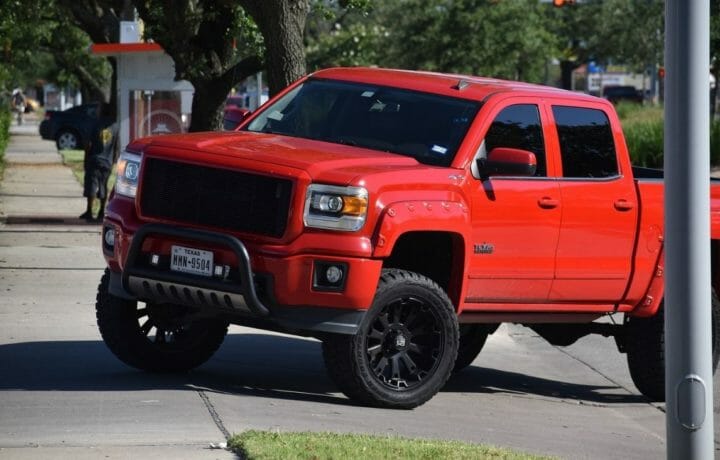The M4 Sherman medium tank was the most produced Allied armored combat vehicle of the Second World War, with more than 50,000 produced between 1942 and 1945. The tank was used in all combat theaters; and not just by the United States military – Great Britain, Free France, China and even the Soviet Union employed the tank during the conflict.
The medium tank was named for the American Civil War general William Tecumseh Sherman, and while it was superior to the early war Axis light armor, the M4 proved inferior the German Tiger and Panther tanks. However, enough were produced that it tipped the scales in the Allies’ favor. Despite being largely obsolete, after the Second World War, upgraded Sherman tanks were used by the United Nations forces in the Korean War and by both sides in the early Arab-Israeli Wars and then by both sides in the Indo-Pakistani War of 1965.
The M4 Sherman has remained a classic example of the capabilities of the “Arsenal of Democracy,” and during the war it was produced by the Fisher Tank Arsenal but also by the Ford Motor Company and by Chrysler’s Tank Arsenal, while General Motors also produced the engines.
Smaller Than Modern SUVs
What is also notable about the M4 Sherman is that today, the medium tank is actually smaller than many light trucks and SUVs (sport utility vehicles) produced in Detroit by Ford, Chrysler, and GM. Car buffs and automotive reviewers have routinely described today’s light trucks and SUVs as being akin to tanks, and that description may be quite apt.
If you’ve seen the movie Fury starring Brad Pitt, you should have a sense of the size of an American M4 “Sherman” tank. The tank is far from spacious, and it certainly lacks in creature comforts, but at 228 x 103 x 108 inches, it couldn’t be described as small. Yet, the M4 is actually shorter than the Ford F-150, which is 250-inches long; and notably the Chevrolet Silverado’s 266-inches! Moreover, the Sherman is just two inches longer than the current model of the Chevrolet Suburban, which is 226-inches long. While the World War II tank wins out in width and height over those civilian vehicles, it says something about the increased size of the American trucks and SUVs. It’s also worth noting that the width of consumer vehicles is limited by the width of the road.
Now it is true that the Sherman would weigh more as well, but it should be noted that the driver of the World War II tank actually sat forward of the turret and would have been lower to the ground than those behind the wheels of today’s miniature monster trucks.
Size Matters
It isn’t just the Sherman that has been compared in length. Multiple media outlets, including the Daily Mail and Jalopnik have determined that many of today’s trucks and SUVs out distance the German Panzer IV’s 233’s inches as well as the British Cromwell’s 241 inches. The Soviet T-34’s 202-inch length was even bested by the GMC Hummer EV, which measures 216-inches.
While the American trucks and SUVs have gotten longer, it isn’t likely they’d be able to get much wider – so the Sherman will continue to outsize them.
And it is also unlikely that any American-made truck or SUV will ever close the size gap with the M1 Abrams main battle tank (MBT), which has been the U.S. military’s front line armored vehicle since the early 1980s. It is about five feet longer and nearly six feet wider than the F-150.
Defined Goal
It is true that trucks have gotten bigger, just as tanks have – but the size of the World War II tanks should be put in context. Many of the first tanks to roll across the battlefields of Europe a generation earlier during the First World War were far larger than those developed after the conflict ended, while the French Army went a different direction and made a light tank. The Reanult FT was just 197 inches, so just slightly smaller than a Jeep Grand Cherokee.
Tanks were also the size they were in World War II for a very specific reason.
“Comparing F-150s to WWII tanks is a bit like comparing apples and oranges,” explained John Adams-Graf, editor of Military Vehicles magazine. “Shermans and T-34s were made mission-specific for a very defined role: defeating German Panzers or Japanese tanks. Their size reflects the engineering beliefs of the era to achieve the goal.”
Adams-Graf told ClearanceJobs his perspective when automakers describe their trucks as being tank-like.
“The F-150s might be better compared to the gorilla that enhances his size by grabbing a large branch and flailing it about to impress and intimidate the other gorillas in the group,” he added. “Despite their size, Shermans and T-34s defeated the Nazis and imperialist Japanese in WWII,” said Adams-Graf. “While some giant F-150s might actually perform real work roles, most in urban settings just reflect drivers who likely have some real self-esteem issues.”




